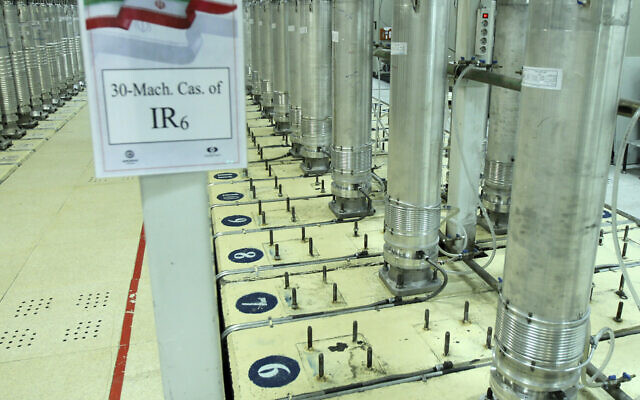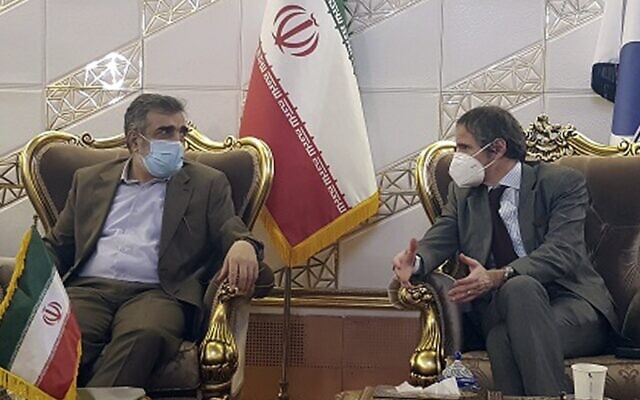UN nuclear watchdog tells member states Islamic Republic has started using a third cluster of advanced IR-2m centrifuges at underground Natanz plant

The International Atomic Energy Agency reportedly told its member states Monday that Iran has started enriching uranium with a third cascade, or cluster, of advanced IR-2m centrifuges at its underground plant at Natanz, in a further breach of the 2015 nuclear deal.
“On 7 March 2021, the Agency verified… that: Iran had begun feeding natural UF6 into the third cascade of 174 IR-2m centrifuges,” the Reuters news agency quoted the UN atomic watchdog as saying in a new report.
UF6 is uranium hexafluoride, a compound that can be fed into centrifuges to produce nuclear fuel.
“The fourth cascade of 174 IR-2m centrifuges was installed but had yet to be fed with natural UF6; installation of a fifth cascade of IR-2m centrifuges was ongoing; and installation of a sixth cascade of IR-2m centrifuges had yet to begin,” the IAEA report said, according to Reuters.
Since the US left the nuclear deal in 2018 under Donald Trump, Iran has walked away from the pact’s limitations on its stockpile of uranium and has begun enriching up 20 percent, a technical step away from weapons-grade levels.
It is also spinning advanced centrifuges barred by the deal, which saw Iran limit its program in exchange for the lifting of economic sanctions.

Iran’s conservative-dominated parliament last month ordered the government to start limiting some inspections by the IAEA, after which the head of the agency, Rafael Grossi, hammered out a temporary technical deal with Tehran.
They confirmed that Iran will continue to allow access to UN inspectors to its nuclear sites — but will for three months bar inspections of other, non-nuclear sites.
According to a report last month, IAEA inspectors last summer found uranium particles at two Iranian nuclear sites that Iran tried to block access to.
Iranian authorities had stonewalled the inspectors from reaching the sites for seven months before the inspection, and Iranian officials have failed to explain the presence of the uranium, Reuters reported, citing diplomats familiar with the UN agency’s work.
As reported by The Times of Israel
